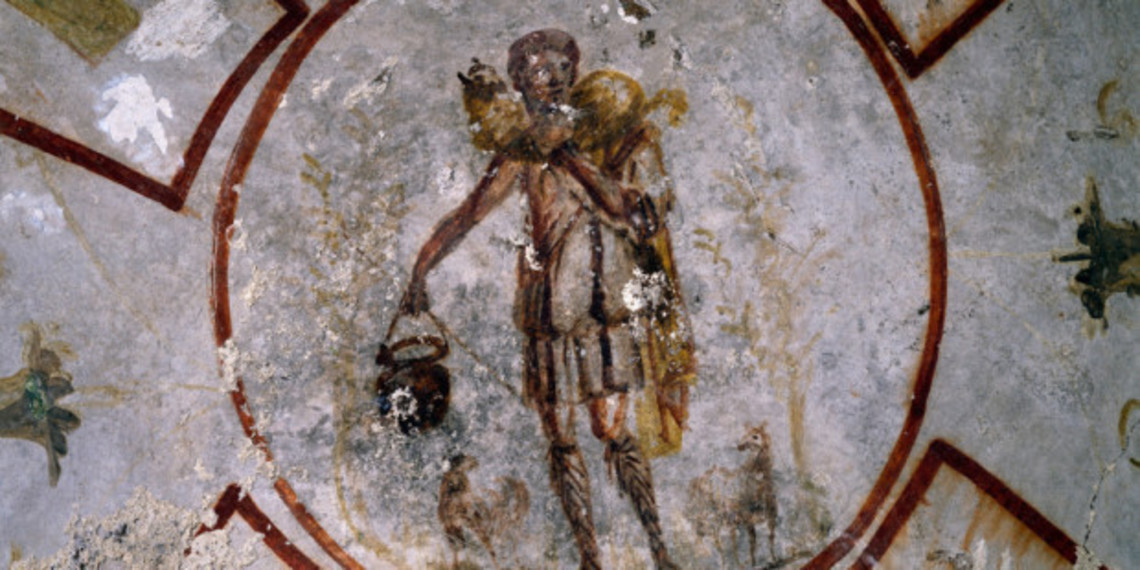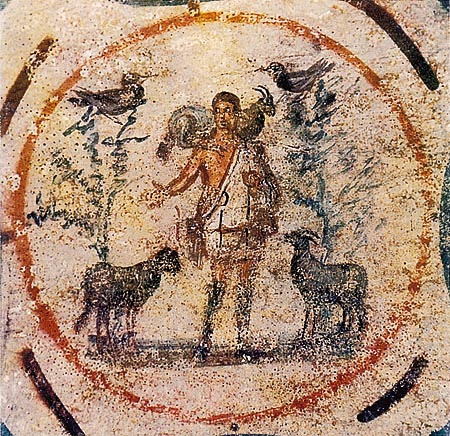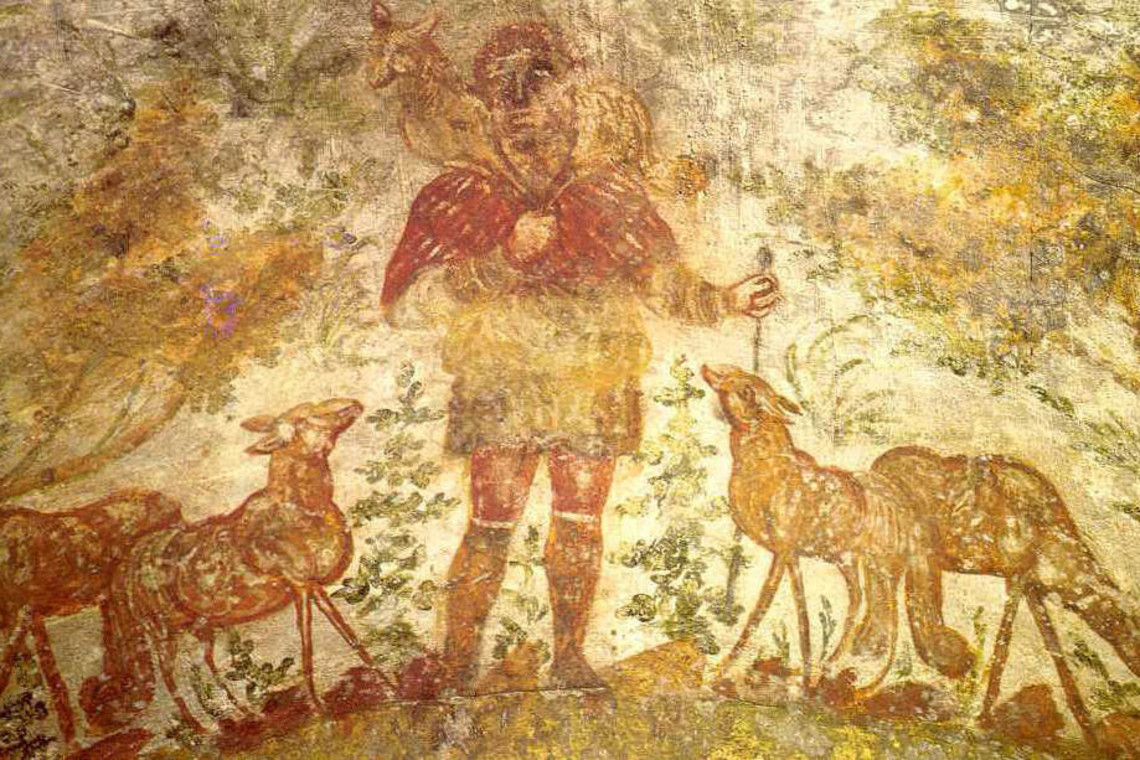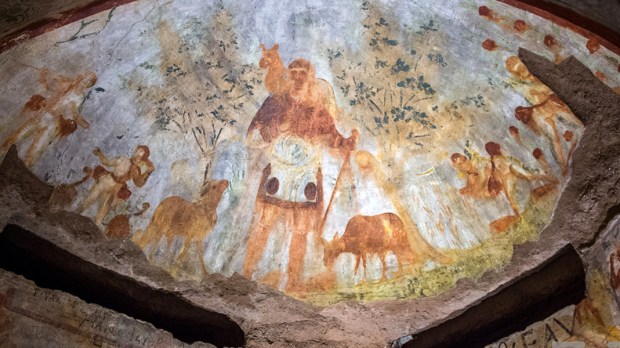The image of the Good Shepherd, who lays down his life for his sheep, is found in the Gospel of John 10:11-18:
I am the good shepherd. A good shepherd lays down his life for the sheep. A hired man, who is not a shepherd and whose sheep are not his own, sees a wolf coming and leaves the sheep and runs away, and the wolf catches and scatters them. This is because he works for pay and has no concern for the sheep. I am the good shepherd, and I know mine and mine know me, just as the Father knows me and I know the Father; and I will lay down my life for the sheep. I have other sheep that do not belong to this fold. These also I must lead, and they will hear my voice, and there will be one flock, one shepherd. This is why the Father loves me, because I lay down my life in order to take it up again. No one takes it from me, but I lay it down on my own. I have power to lay it down, and power to take it up again. This command I have received from my Father.
That image can be found in the Catacombs of Rome, at a time when it was illegal to create more explicitly Christian art. The art left behind by early Christians offers us a window into their faith. Painted on the walls of the St. Callisto catacomb in Rome sometime in the middle of the 3rd century is an image of Jesus carrying a sheep across his shoulders.

And around the same time, or perhaps a century later, early Christians left another image of Christ as the Good Shepherd, in the Catacomb of Priscilla in Rome. Here, Jesus is portrayed with a lamb on his shoulders and two sheep at his sides, representing his flock.

And in Domitilla’s catacomb we find this, perhaps the earliest existing image of the Good Shepherd, dating back to the 2nd century.

While this image can be found in pagan cultures in which animals were offered as sacrifices to the gods, it takes on a Christian meaning inspired by the words of the New Testament.

